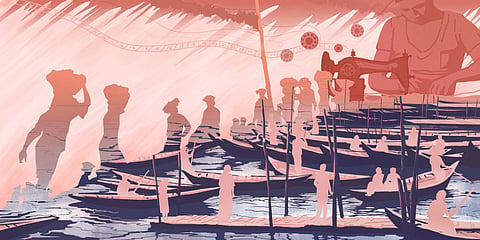(This article is part of our special series 'Rethinking Bangladesh'. You can read the editorial note to the series here.)
You'll always end up in this city. Don't hope for things elsewhere:
there's no ship for you, there's no road.
Now that you've wasted your life here, in this small corner,
you've destroyed it everywhere in the world.
Albeit gloomy, this excerpt from C P Cavafy's 1975 poem 'The City' is a bittersweet reminder of the reality of urban civilisation. For those of us navigating the chaos and charisma of life in the burgeoning cities of Southasia, these lines almost seem like an anthem of being. Depleting water resources, extreme weather, incessant footfalls of migrants and diminishing spaces are generally considered dark laurels of a Southasian urbanity gone wrong. However, the narrative of urbanisation is inadequate to encompass the idea that cities are also imaginations and shadows of ourselves. In the quiet catastrophe that has fallen upon the urban populace in the aftermath of the pandemic, there is a need for different 'ways of seeing' and meditating on a rapidly changing topography and consciousness. It is while grappling with this thought during lazy lockdown days that I stumbled upon a series of experimental films by independent filmmaker Abid Hossain Khan.

